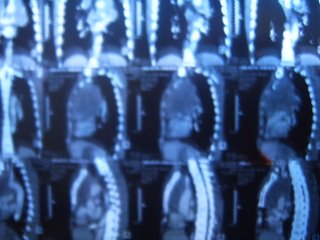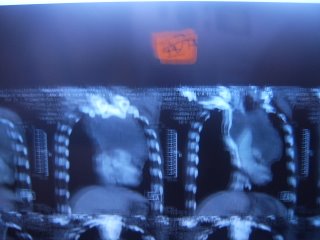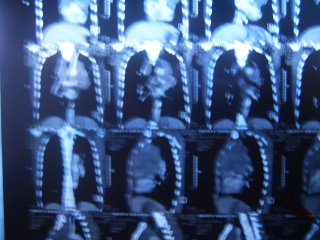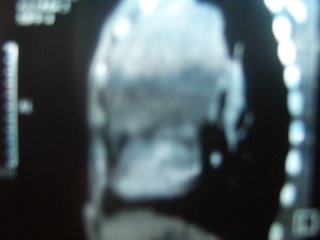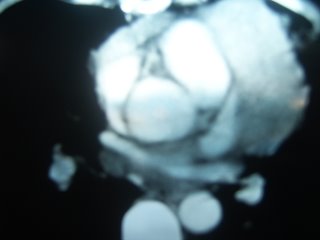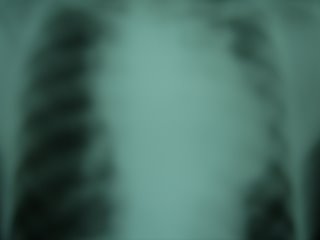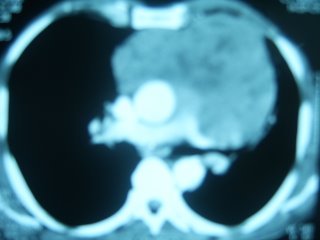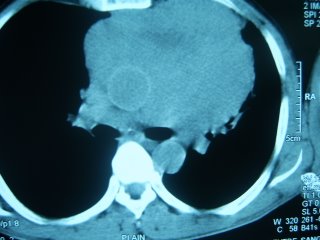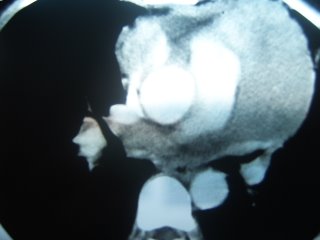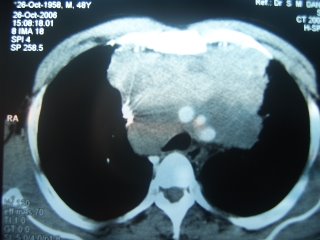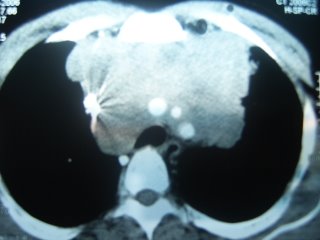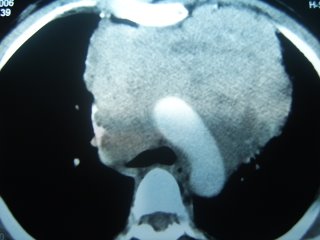By Fox Chase Cancer Center, New research suggests that men with prostate cancer who choose radiation therapy should seek treatment centers that will offer high-dose radiation. A new study from Fox Chase Cancer Center finds that higher doses of 74 to 82 Gray (Gy) greatly reduce the risk that the cancer will spread later--even 8-10 years after treatment.
"There is a comprehensive body of evidence demonstrating that prostate cancer treated with higher doses of radiation is less likely to grow back in the prostate or cause a rising PSA, and now, we know it is also less likely to spread later to other parts of the body," explained Peter Morgan, M.D., a resident in the Radiation Oncology Department at Fox Chase Cancer Center.
Generally, treatment centers that offer 3D conformal radiation therapy or a newer system of radiation delivery called IMRT (intensity modulated radiation therapy) treat men with the higher levels of radiation shown in this study to prevent the cancer's spread.
Morgan said that no published data from prospective randomized trials have shown a significant reduction in distant metastasis with higher radiation dose, likely because patients have not been followed for long enough to see the reduced of late-wave of metastasis. The current study shows that the risk of cancer spreading 8-10 years after treatment is lower when doses >74 Gray of radiation are given.
When asked how more radiation to the prostate protects the rest of the body from the cancer, Dr. Morgan replied, "That's what is so important about this work. We believe that the late wave of distant metastasis is due to the persistence of cancer in the prostate itself, which subsequently seeds tumor cells to other parts of the body. Because higher dose radiation more effectively kills cancer in the prostate, the source for future metastases is eliminated."
From 1989 to 1999, 667 men with intermediate- to high-risk prostate cancer were treated consecutively with 3D conformal radiation therapy. The outcomes of men who received less than 74 Gy, 74-75.9 Gy and greater than 76 Gy were compared. These groups had a median follow-up of 84, 84 and 65 months, respectively. The 10-year rate of the cancer spreading outside of the prostate (distant metastasis) was 16 percent for radiation doses less than 74 Gy, 7 percent for 74-75.9 Gy, and 3 percent for greater than 76 Gy.
Morgan said, "At our institution the policy for several years has been to treat prostate cancer to a dose of 76 to 80 Gy using IMRT. This study confirms that we are doing the right thing."
- The results of the study were presented today at the 48th Annual Meeting of the American Society for Therapeutic Radiology and Oncology in Philadelphia.
Saturday, December 02, 2006
Tea Soothes Skin Damage Linked to Cancer Treatment
Tea extracts can help reduce skin damage caused by cancer radiation therapy, according to a study by American and German researchers.
They examined the effects of green tea and black tea extracts and found that they reduced the duration of radiation-induced skin damage by five to 10 days. The tea extracts work at the cellular level to inhibit inflammatory pathways and reduce inflammation, said the team from the University of California, Los Angeles, and the University of Freiburg.
As well as testing the extracts on patients, the researchers studied the effects of green and black tea extracts on human and mouse white blood cells in laboratory cell cultures.
They found that the extracts reduced the release of pro-inflammatory cytokines, such as IL-1beta, IL-6, IL-8, TNF-alpha and PGE2, in human white blood cells. Green tea extract appeared to have higher anti-inflammatory properties than black tea extract.
Both green and black tea extracts inhibited one major inflammatory pathway in mouse white blood cells.
The researchers said that the high amount of polyphenols in tea is likely responsible for its anti-inflammatory activity, but added that other pathways are likely involved in its clinical effectiveness.
The study is published in the journal BMC Medicine.
They examined the effects of green tea and black tea extracts and found that they reduced the duration of radiation-induced skin damage by five to 10 days. The tea extracts work at the cellular level to inhibit inflammatory pathways and reduce inflammation, said the team from the University of California, Los Angeles, and the University of Freiburg.
As well as testing the extracts on patients, the researchers studied the effects of green and black tea extracts on human and mouse white blood cells in laboratory cell cultures.
They found that the extracts reduced the release of pro-inflammatory cytokines, such as IL-1beta, IL-6, IL-8, TNF-alpha and PGE2, in human white blood cells. Green tea extract appeared to have higher anti-inflammatory properties than black tea extract.
Both green and black tea extracts inhibited one major inflammatory pathway in mouse white blood cells.
The researchers said that the high amount of polyphenols in tea is likely responsible for its anti-inflammatory activity, but added that other pathways are likely involved in its clinical effectiveness.
The study is published in the journal BMC Medicine.
Thursday, November 16, 2006
Sunday, October 29, 2006
Palliation
Life is an ongoing challenge. To deal with terminal patients on a continuous basis requires strength. Fungated post penectomy inguinal mass, a post operated carcinoma prostate-bleeding for more than 12 hours, a Carcinoma lung with metastasis to almost the complete spine, a unknown primary with carcinomatous meningitis and multiple metastasis, etc etc.
Few get palliated and few don't. It is our duty to do the best to them.
The penectomy patient has improved after palliative radiation.
The prostate patient's relatives were not ready to spend. Inspite of me offering radiation at free of cost to them, they were not ready to get the required blood to support him. His hemoglobin was less than 4 gm%.
The patient got discharged without any treatment and I felt a tinge of regret. The inevitable must have happened.
There was another patient referred from my alma mater 'Tata Memorial Hospital', Carcinoma lung with brain metastases. The patient was in good shape. The sons decided to only offer Steroid medication as supportive care to their dad, fearing that radiation is painful. Both sons were well educated but decided to go against a treatment which would have improved thier dad's life as well as given him a better quality of life.
At present there is another patient of carcinoma lung admitted, who has multiple vertebral metastasis. His pain due to metastasis has reduced but he still continues to be breathless. He has bilateral lung infiltrates. Everyday is a challenge to treat him.
Few get palliated and few don't. It is our duty to do the best to them.
The penectomy patient has improved after palliative radiation.
The prostate patient's relatives were not ready to spend. Inspite of me offering radiation at free of cost to them, they were not ready to get the required blood to support him. His hemoglobin was less than 4 gm%.
The patient got discharged without any treatment and I felt a tinge of regret. The inevitable must have happened.
There was another patient referred from my alma mater 'Tata Memorial Hospital', Carcinoma lung with brain metastases. The patient was in good shape. The sons decided to only offer Steroid medication as supportive care to their dad, fearing that radiation is painful. Both sons were well educated but decided to go against a treatment which would have improved thier dad's life as well as given him a better quality of life.
At present there is another patient of carcinoma lung admitted, who has multiple vertebral metastasis. His pain due to metastasis has reduced but he still continues to be breathless. He has bilateral lung infiltrates. Everyday is a challenge to treat him.
Friday, October 06, 2006
Peripheral Radiotherapy Center
I have moved from Tata Memorial Hospital to a peripheral Cancer center. It is entirely different experience to discuss issues with patient and counsel them as an independent doctor. I am learning each day.
I have a tough 60 year old gentleman suffering from multiple myeloma. He has visited a tertiary care center at Bangalore and is not happy with the whole experience. He is not interested in any kind of treatment and is preently in a denial mode.
I have at present just promised to relieve his pain. I hope he improves with pain relief and get backs for further treatment.
I have a tough 60 year old gentleman suffering from multiple myeloma. He has visited a tertiary care center at Bangalore and is not happy with the whole experience. He is not interested in any kind of treatment and is preently in a denial mode.
I have at present just promised to relieve his pain. I hope he improves with pain relief and get backs for further treatment.
Wednesday, August 02, 2006
Wednesday, May 24, 2006
Wednesday, April 05, 2006
Breast Cancer Quality of Life(QOL)
Weight training improves quality of life (QOL) in breast cancer survivors, according to the results of a randomized trial reported in the March 27 Early View issue of Cancer.
"Aerobic exercise training has been shown to have beneficial effects on QOL in breast cancer survivors," write Tetsuya Ohira, MD, from the University of Minnesota in Minneapolis, and colleagues from the Weight Training for Breast Cancer Survivors (WTBS) Study. "However, the effects of weight training on psychological benefits are unknown.... There is the potential that for breast cancer survivors, weight training might increase a sense of control over their lives during the 'watchful waiting' time frame between the end of active treatment and the 5-year mark post-diagnosis (e.g., psychological empowerment via physical strength increases)."
Aerobic exercise has been demonstrated to improve a variety of outcomes among women who survive breast cancer, from fatigue to depression and QOL. An analysis of the Nurses' Health Study by Holmes and colleagues, which was published in the May 25, 2005, issue of JAMA, examined the risk for mortality associated with various levels of physical activity among breast cancer survivors. The authors found that walking 3 to 5 hours per week at an average pace could significantly reduce the risk for all-cause mortality compared with walking less than 3 hours per week. There was little additional survival benefit for more intense exercise regimens.
"Aerobic exercise training has been shown to have beneficial effects on QOL in breast cancer survivors," write Tetsuya Ohira, MD, from the University of Minnesota in Minneapolis, and colleagues from the Weight Training for Breast Cancer Survivors (WTBS) Study. "However, the effects of weight training on psychological benefits are unknown.... There is the potential that for breast cancer survivors, weight training might increase a sense of control over their lives during the 'watchful waiting' time frame between the end of active treatment and the 5-year mark post-diagnosis (e.g., psychological empowerment via physical strength increases)."
Aerobic exercise has been demonstrated to improve a variety of outcomes among women who survive breast cancer, from fatigue to depression and QOL. An analysis of the Nurses' Health Study by Holmes and colleagues, which was published in the May 25, 2005, issue of JAMA, examined the risk for mortality associated with various levels of physical activity among breast cancer survivors. The authors found that walking 3 to 5 hours per week at an average pace could significantly reduce the risk for all-cause mortality compared with walking less than 3 hours per week. There was little additional survival benefit for more intense exercise regimens.
Subscribe to:
Comments (Atom)
